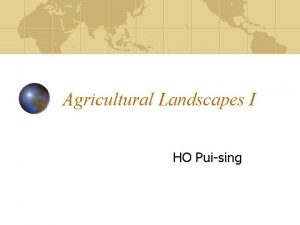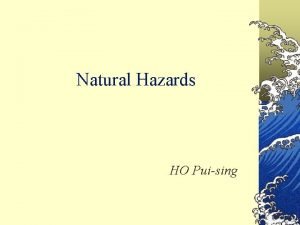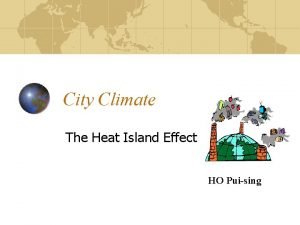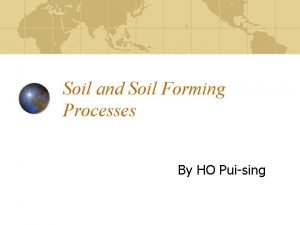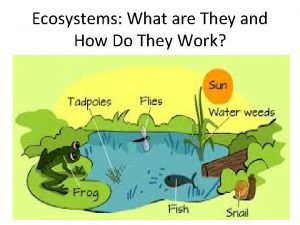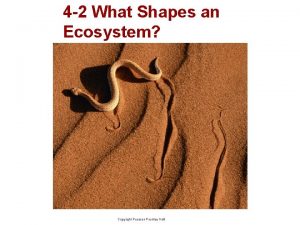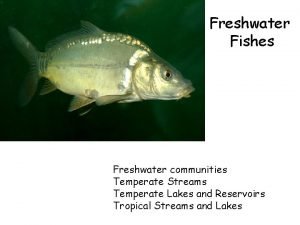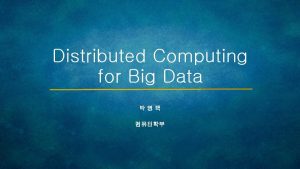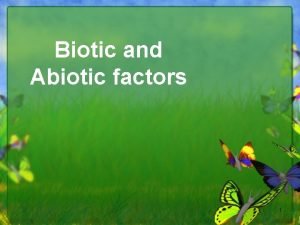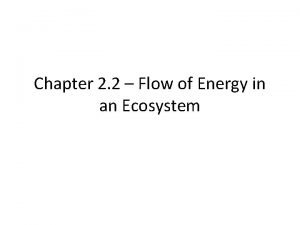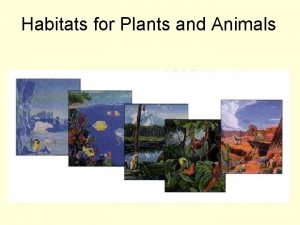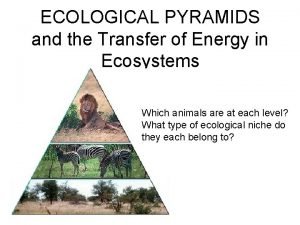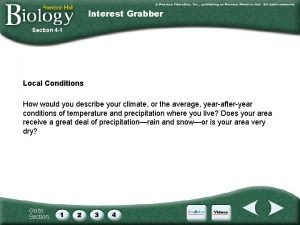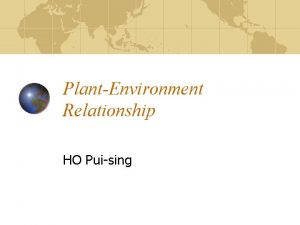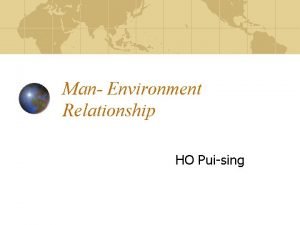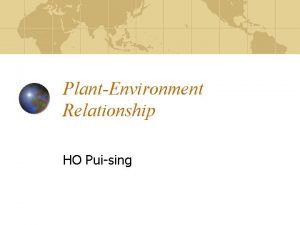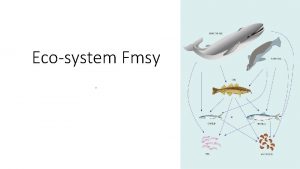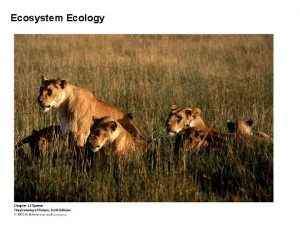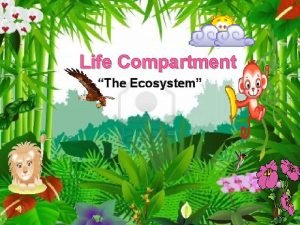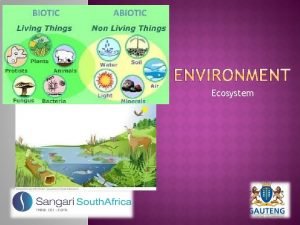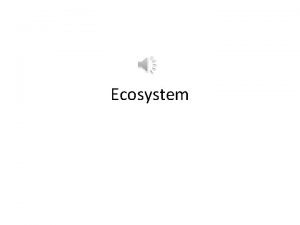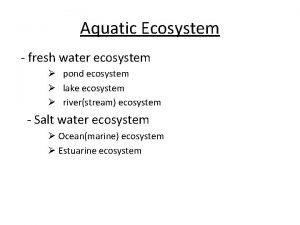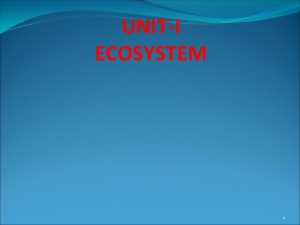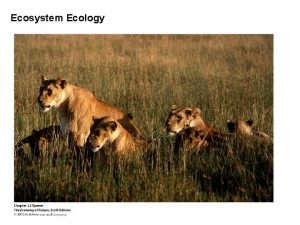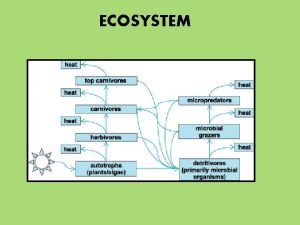Ecosystem HO Puising What is an ecosystem An


















- Slides: 18

Ecosystem HO Pui-sing

What is an ecosystem An ecosystem is a grouping of organisms that interact with each other and their environment in such a way as to preserve the grouping. There is a great variety of ecosystems in existence,


Three major principles of ecosystem Nutrient cycling: Movement of chemical elements from the environment into living organisms and from them back into the environment through organisms live, grow, die and decompose. Energy flow: Energy is required to transform inorganic nutrients into organic tissues of an organism. Energy is the driving force to the work of ecosystem. Structure It refers to the particular pattern of interrelationships that exists between organisms in an ecosystem.

Nutrient cycling

Energy flow

Structure

Ecosystem Nutrient cycling, energy flow and structure


Biotic components and food chain

Movement of energy and nutrients Food chain Food webs Trophic level, biomass and biome

Food Chain The particular pathway of nutrient and energy movement depends on which organism feeds on anther. Decomposers

Food Webs

The links between biodiversity, ecosystem services and human well-being roy haines-young and marion potschin Centre for Environmental Management, School of Geography, University of Nottingham

Ecosystems services and the Ecosystem Approach The Millennium Ecosystem Assessment (MA 2005 ): The main source for the current interest in ecosystem services the first comprehensive global assessment of the implications of ecosystem change for people. It came about as the result of a call in 2000 by then UN Secretary. General Kofi Annan, to ‘assess the consequences of ecosystem change for human well-being and the scientific basis for action needed to enhance the conservation and sustainable use of those systems and their contribution to human well-being’. The work began in 2001 and involved over 1, 300 international experts. It resulted in a series of publications in 2005 that described the condition and trends of the world’s major ecosystems and the services they provide, and the options available to restore, conserve or enhance their sustainable use.

The development of the concept of Ecosystems Services 1970 Study of Critical Environmental Problems (SCEP 1970 ), which first used the term ‘environmental services’. Westman ( 1977 ) later reduced this to ‘nature’s services’ and finally the term ‘ecosystem services’ was used by Ehrlich and others in the early 1980 s (Mooney and Ehrlich 1997)

the Convention for Biological Diversity (CBD) According to the CBD, the Ecosystem Approach seeks to put human needs at the centre of biodiversity management

 Puising
Puising Puising
Puising Puising
Puising Puising
Puising Puising
Puising Puising
Puising Ecosystem examples
Ecosystem examples 4-2 what shapes an ecosystem
4-2 what shapes an ecosystem -is an example of a lentic ecosystem.
-is an example of a lentic ecosystem. Apache distributed computing
Apache distributed computing Pond ecosystem biotic and abiotic components
Pond ecosystem biotic and abiotic components Compare and contrast community and ecosystem
Compare and contrast community and ecosystem Principles of ecology 2 flow of energy in an ecosystem
Principles of ecology 2 flow of energy in an ecosystem Ecosystem vs community
Ecosystem vs community What are the habitats
What are the habitats Hadoop ecosystem
Hadoop ecosystem Pyramid of energy in ecosystem
Pyramid of energy in ecosystem Section 4-2 what shapes an ecosystem answer key
Section 4-2 what shapes an ecosystem answer key Interspecific competition relationship
Interspecific competition relationship
